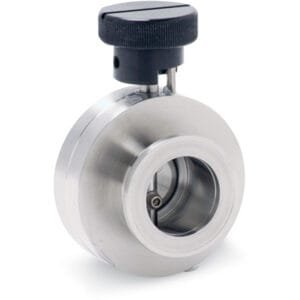Vented Hardware Overview
Vented hardware is specifically designed for high and ultra-high vacuum (UHV) environments, where minimizing outgassing and preventing virtual leaks are critical. At TFM, we supply a wide range of vented components — including bolts, nuts, and washers — engineered with axial or radial vent paths to release trapped gases from blind-threaded holes.
Why Use Vented Hardware?
In vacuum systems, standard fasteners can trap air or volatile gases within blind tapped holes. During pump-down, this trapped volume becomes a source of virtual leaks, delaying the evacuation process and compromising vacuum performance. Vented hardware solves this problem by allowing gas to escape quickly through engineered vent paths.
Key Features
Axial or Radial Vents: Precision-drilled holes allow efficient gas flow during vacuum evacuation.
Material Compatibility: Available in stainless steel (304, 316), titanium, and other vacuum-compatible alloys.
Thread Standards: Offered in both metric (M) and inch-based (SI) threads to suit global systems.
Cleanroom Ready: All vented fasteners are precision cleaned and packaged for immediate use in sensitive environments.
Optional Coatings: Anti-galling coatings like silver or MoS₂ available for high-torque or repeated assembly use.
Common Types of Vented Hardware
Vented Bolts (Metric & SI): Axially vented screws designed for UHV flanges and assemblies.
Vented Nuts: Slotted or cross-drilled to permit trapped gas escape during tightening.
Vented Washers: Used with vented bolts to maintain flat, even clamping while supporting outgassing paths.
Custom Vented Fasteners: TFM can manufacture to spec, including special materials, head styles, or vent geometries.
Applications
Semiconductor process equipment
Thin film deposition systems (PVD, CVD, ALD)
Analytical instruments (XPS, SEM, TEM)
Aerospace & cryogenics
Research laboratories and vacuum chambers
Why Choose TFM’s Vented Hardware?
TFM’s vented fasteners meet the demanding requirements of vacuum technology professionals. With precision machining, rigorous cleaning, and a broad selection of materials and sizes, we provide the performance and reliability critical to your vacuum operations.





Reviews
There are no reviews yet.